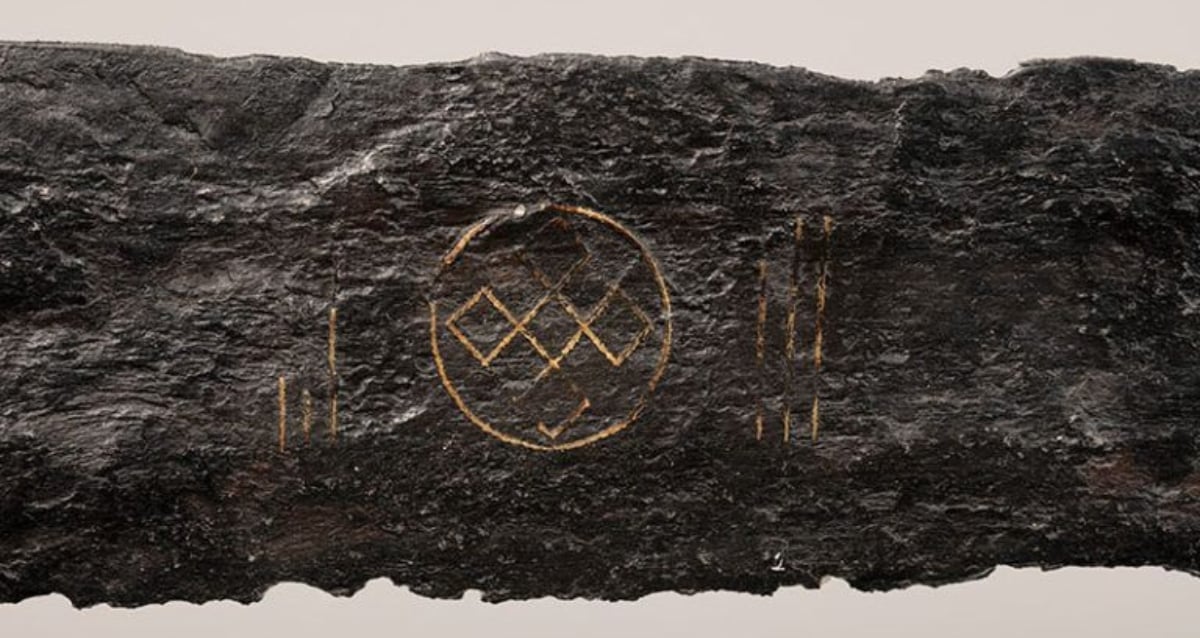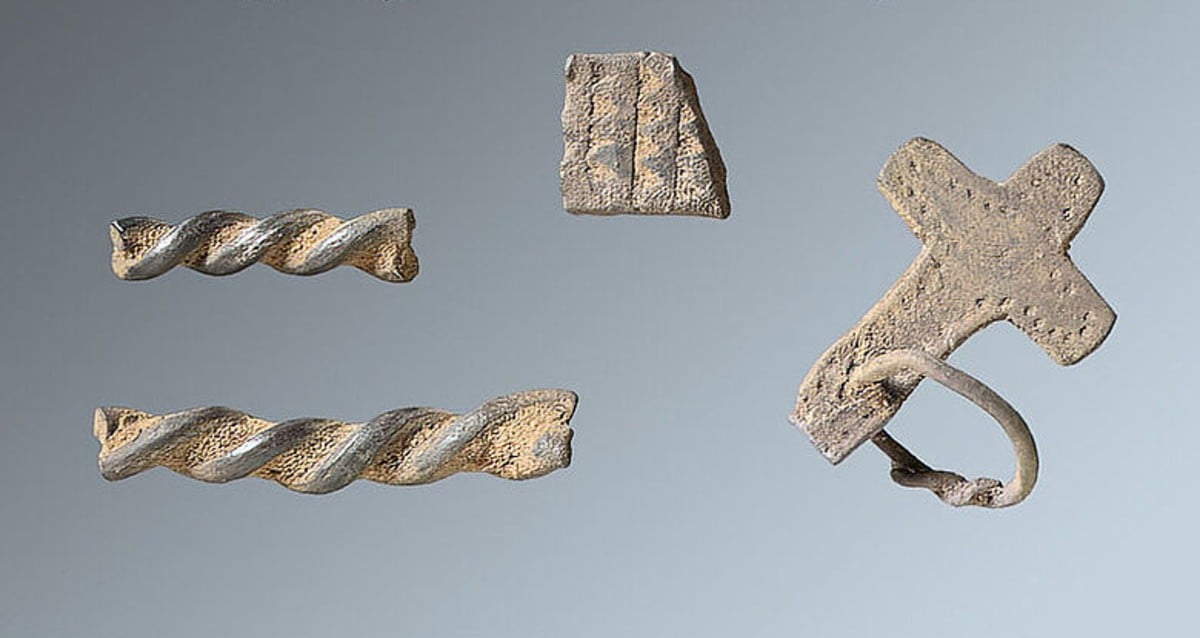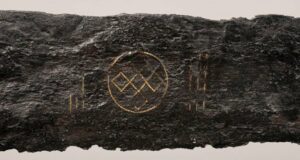Mystery Unveiled: Medieval Sword with Enigmatic Viking Inscription Discovered Beneath Dutch River
For the people of 11th-century Utrecht, a society where Christian beliefs were deeply interwoven with older traditions, the endless knot could have resonated with ideas of everlasting faith, the cyclical nature of life and death, or the unbreakable bonds of community. Its presence on this sword only reinforces these ideas.

Ruben de Heer/National Museum of AntiquitiesThe pattern represents a blend of Christian and pagan traditions.
As for the sword’s exceptional state of preservation, experts credited the oxygen-poor soil of the wet riverbed.
They also determined that the sword had been discarded without its scabbard, given that there were no signs of one anywhere nearby. This could indicate that the blade was deliberately placed in the river, possibly for a ritual purpose.
“Medieval swords are very personal possessions: they were buried with the owner or (alternatively) ‘sacrificed’ in the water. There they were often exceptionally well preserved. It is therefore a golden opportunity when one surfaces centuries later,” a translated statement from the museum reads.
The History Of Swords In Medieval Utrecht
In the 11th century, the city of Utrecht, located in the heart of what is now the Netherlands, was a pivotal center of power, commerce, and religious influence.
As the seat of the powerful Prince-Bishopric, Utrecht was a flourishing principality, governing a significant portion of the northern Low Countries. Its strategic position along the Rhine River, even as the river’s course was being actively managed and altered, ensured its role as a crucial trade hub.














Post Comment